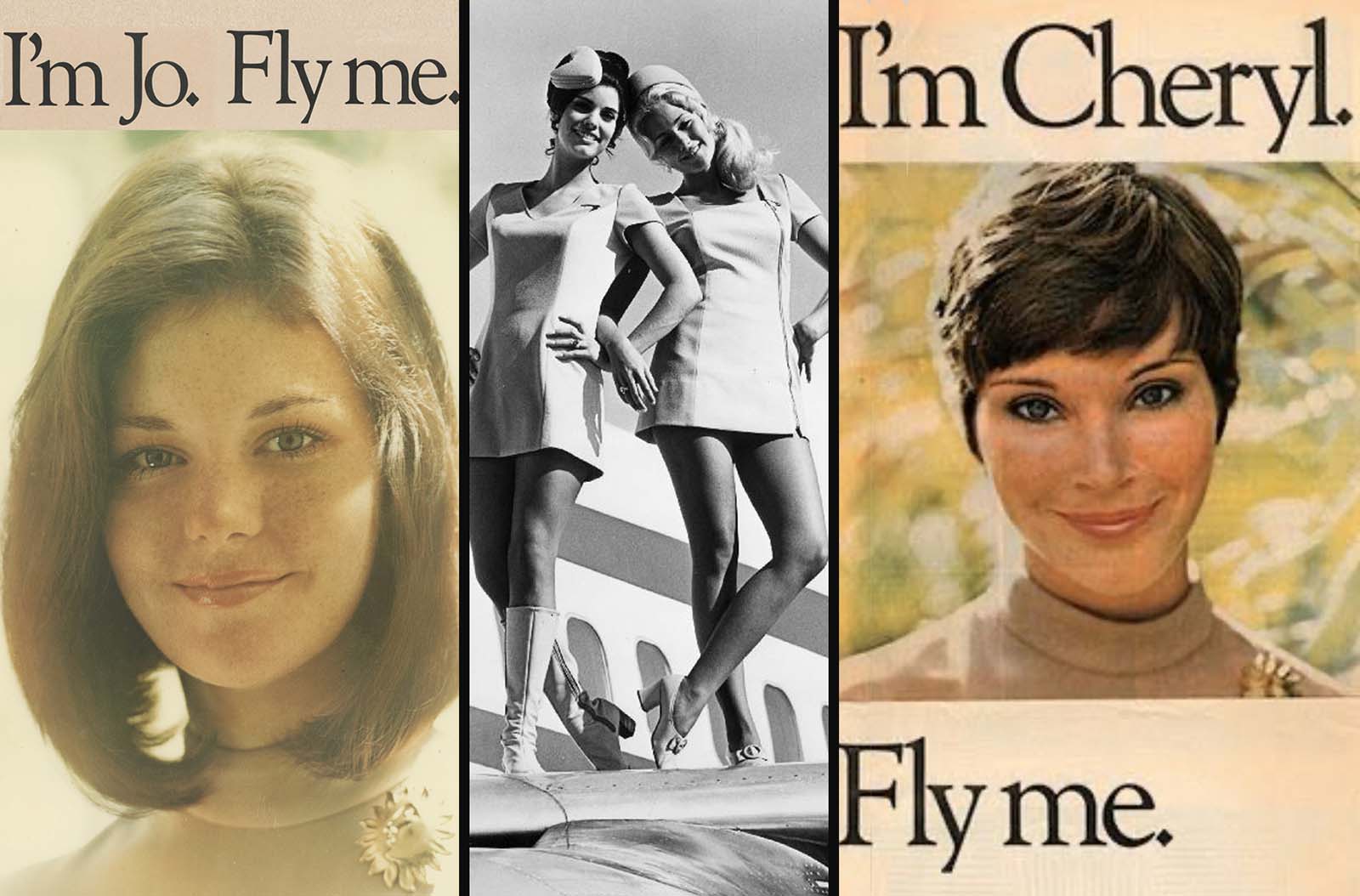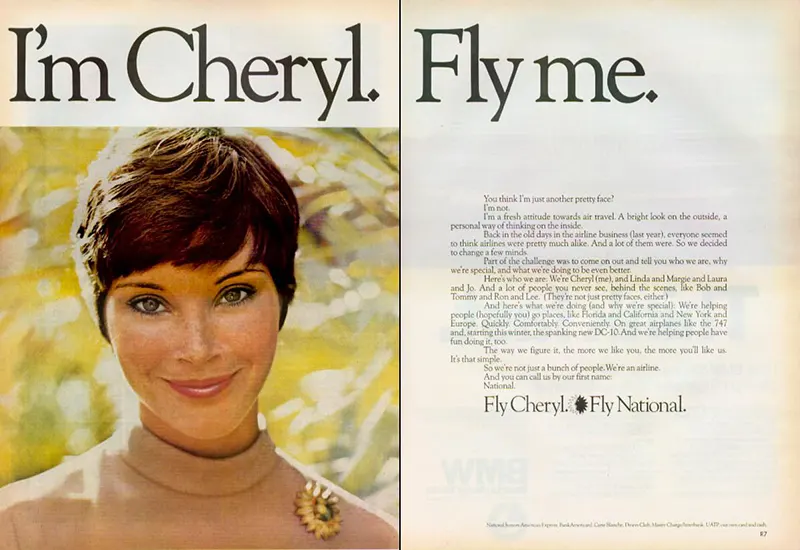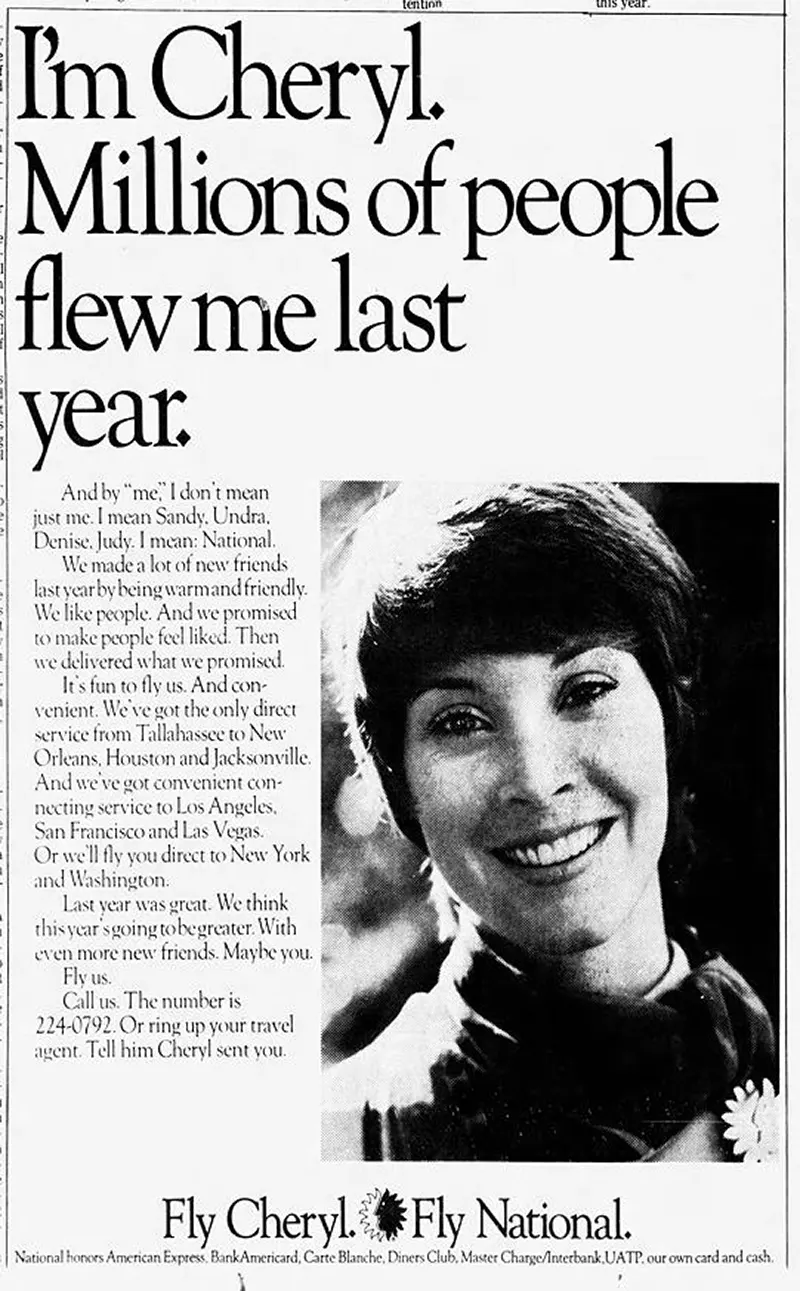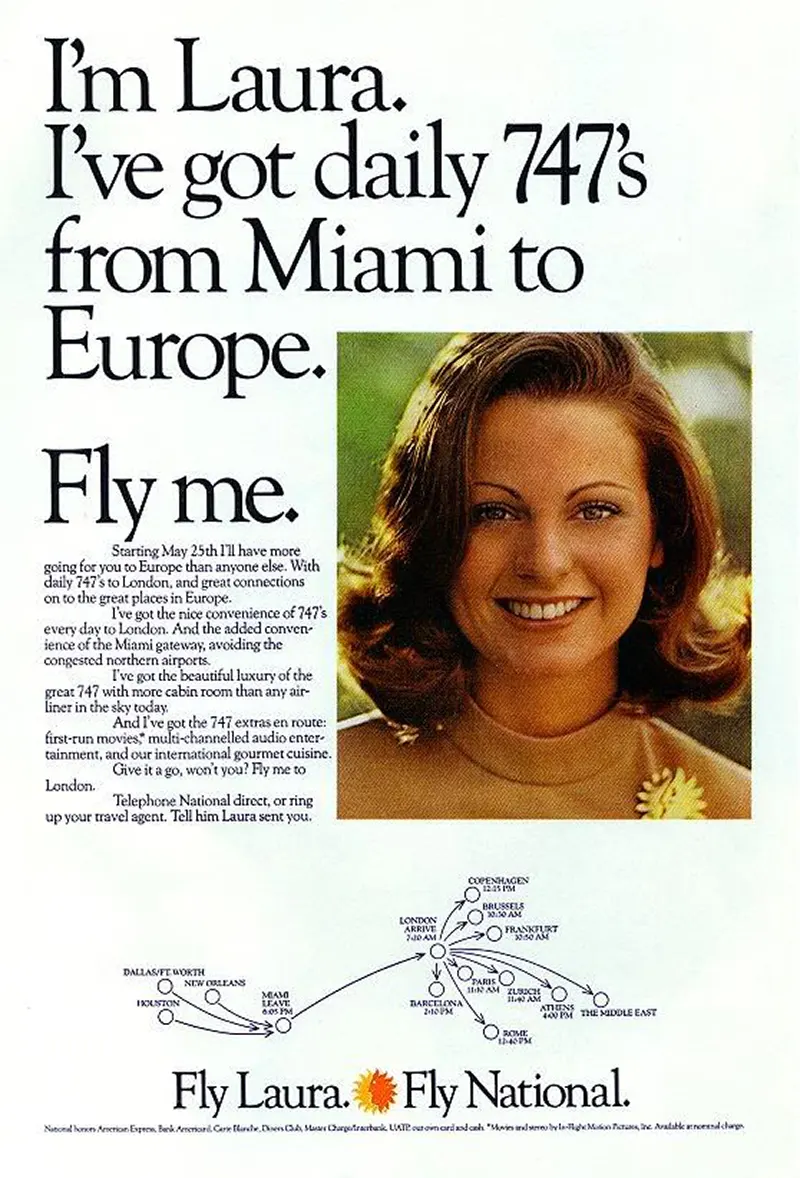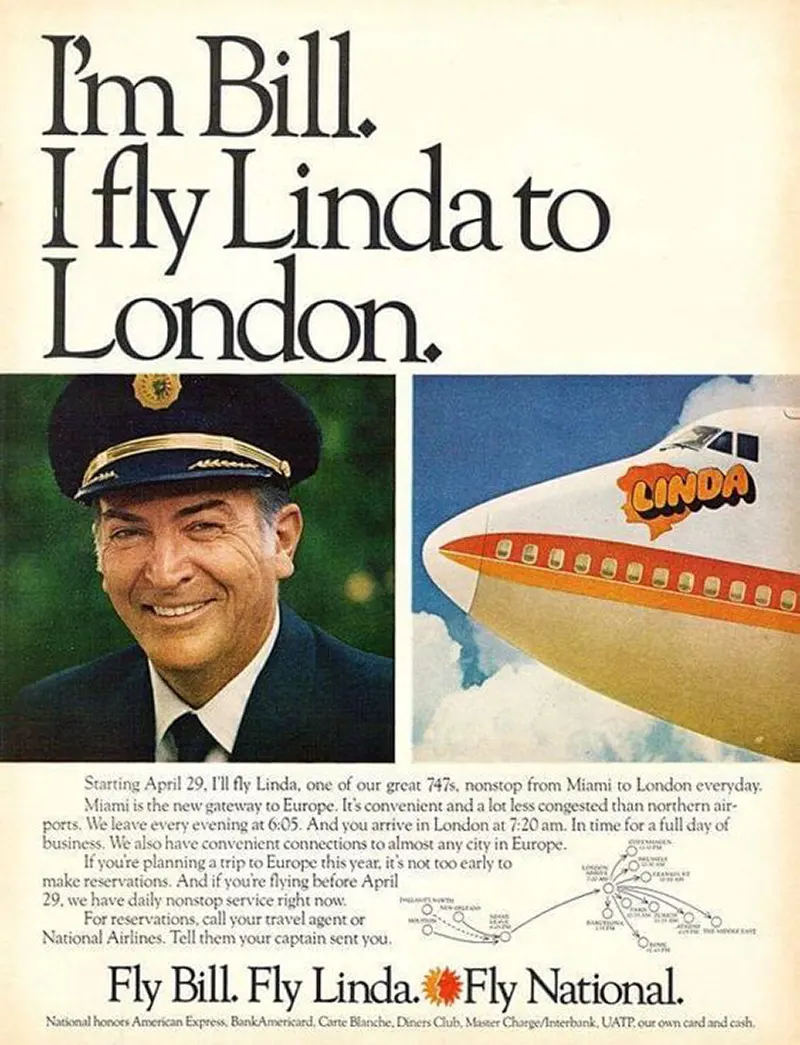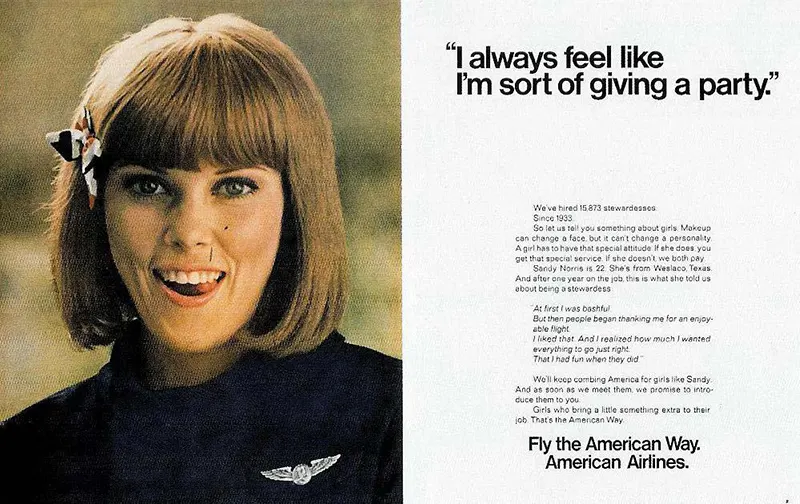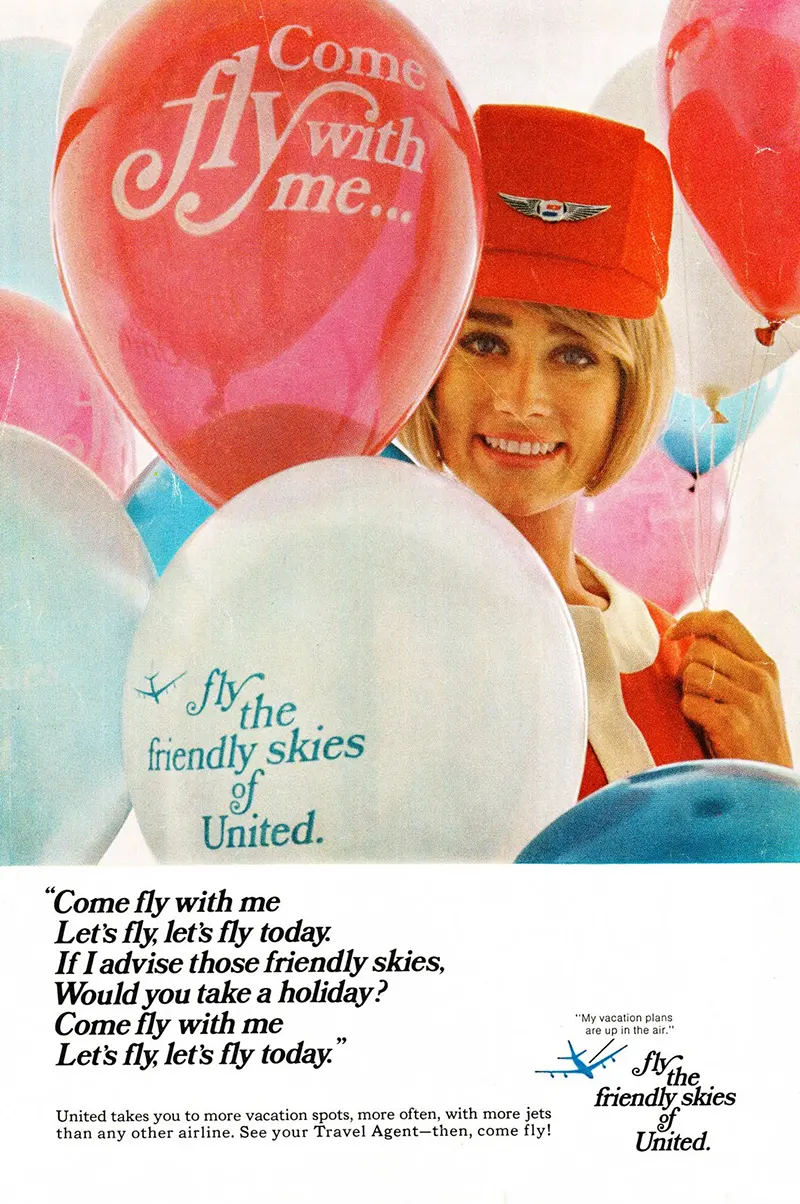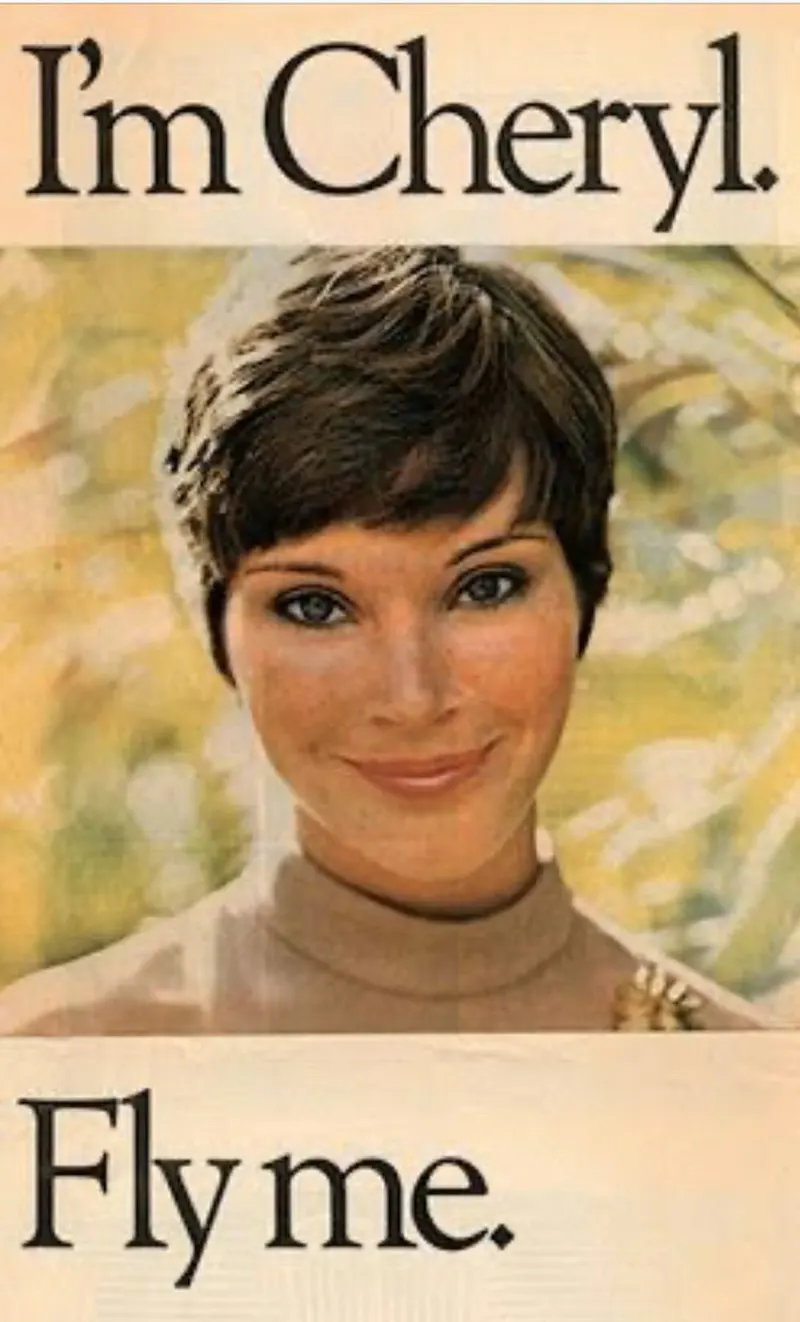“Fly me” was an advertising campaign launched by National Airlines in the 1970s. The campaign was created by Wells Rich Greene, an advertising agency, and was known for its sexually suggestive slogans and imagery. The first print advertisement featured a photographic close-up of Cheryl Fioravante, a freckle-faced stewardess with a boyish coiffure, smiling innocently. “Hi, I’m Cheryl. Fly Me,” the ad read in large boldface. Subsequent ads invited travelers to “fly” other fresh-faced stewardesses. The advertisements were designed to appeal to the male demographic and suggest that National Airlines was a desirable and upscale brand. The innuendo-laden campaign cost National Airlines around $9 million a year on the ads—but it paid off. The company saw a significant increase in bookings and brand awareness as a result of the campaign. The National Organization for Women objected to the ads, calling them sexist, saying that they presented flight attendants as a “flying meat market” and invited passengers to make sexual advances. The slogan caused women’s rights groups to protest outside F. William Free’s office (the advertising executive of the campaign) in New York City carrying signs reading “I’m Bill-Fire Me.” In 1972, the company published more ads of the same theme, including another one with ‘Cheryl’, which now read “Millions of people flew me last year.” Despite their mixed reviews, Free’s ads proved effective in reaching the target and in attracting the nation’s attention. The campaign was also used as a case study in advertising and marketing classes and is still referenced today as an example of a successful, yet controversial, ad campaign. However, even though it was successful in terms of sales, the campaign was not without its negative effects. It was considered sexist, objectifying women and promoting a narrow and outdated idea of femininity. It reinforced the notion that women were nothing more than objects to be looked at and desired. This type of advertising contributed to the persistence of a culture that allowed for the objectification and marginalization of women. Additionally, the campaign was criticized for its promotion of hedonistic consumerism, and the idea that happiness and fulfillment could be bought through consumer goods and services. The bodies of women flight attendants have long been an integral part of the airlines’ marketing strategy (as shown in these pictures). In the postwar period, government regulations ensured that fares, routes, and planes were nearly indistinguishable. To stand out, airlines used their flight attendants’ looks and promised an exciting or erotic in-flight experience. At the dawn of the commercial aviation industry, airlines introduced formal and informal policies to ensure that their flight attendants were uniformly young, slender, unmarried white women, running job ads with explicit requirements for height, weight, and marital status. “Charm farms,” as stewardess schools were often called, taught women how to exercise, walk in high heels, and fashionably style their hair and makeup. According to Vanity Fair, stewardesses in the “glamour era of travel” could not weight more than 140 pounds (64kg), could not be shorter than five feet two inches (157cm) or taller than five feet nine inches (175cm), and had to agree to retire by the age of 32. In 1966, a New York Times classified ad for stewardesses at Eastern Airlines listed these requirements: “A high school graduate, single (widows and divorcees with no children considered), 20 years of age (girls 19 1/2 may apply for future consideration). 5’2” but no more than 5’9,” weight 105 to 135 in proportion to height and have at least 20/40 vision without glasses.” This type of marketing accelerated dramatically in the mid-1960s when airlines began replacing prim and proper uniforms with increasingly revealing clothing. Braniff International Airlines ushered in this transformation in 1965 when it announced “an end to the plain plane” and created a high-fashion “air strip” to be performed by its hostesses. Working together with the Italian designer Emilio Pucci, the company arranged for its stewardesses to take off or change their clothing in-flight. Stewardesses wore traditional skirt suits to welcome passengers. For dinner service, they changed into a shift dress, and for after-dinner drinks, they changed into knee-length ‘‘harem’’ pants. Of course, this featured heavily in their ads. The tactic of turning airplane aisles into catwalks worked: In 1966, the company reported a 50 percent increase in business. By the 1970s, as the women’s right movement grew, women were getting tired of the objectification of stewardesses. The Stewardesses for Women’s Rights feminist group was founded in 1972 and around the same time men were added to the cabin crews. The restriction of hiring only women was lifted at all airlines in 1971 due to the decisive court case of Diaz vs. Pan Am. The Airline Deregulation Act was passed in 1978, and the no-marriage rule was eliminated throughout the US airline industry by the 1980s. The last such broad categorical discrimination, the weight restrictions, were relaxed in the 1990s through litigation and negotiations.
(Photo credit: Pinterest / Flickr / Wikimedia Commons / Gillian A Frank and Lauren Gutterman via Jezebel / Britannica). Notify me of new posts by email.
Δ Subscribe
